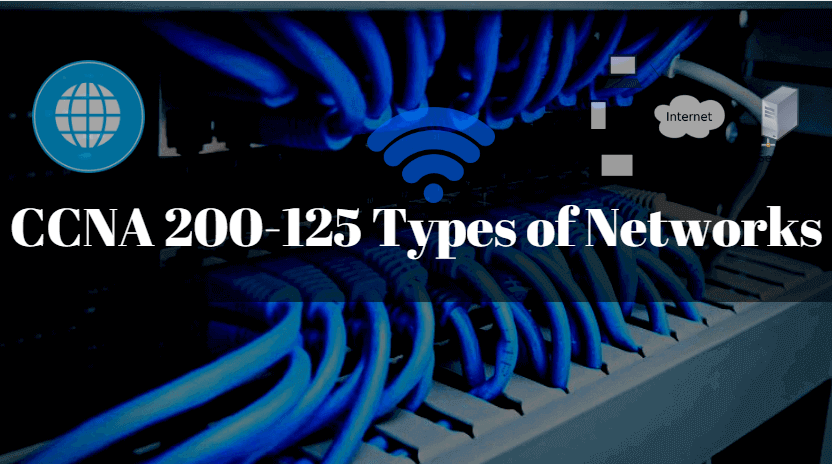A network is a collection of computers connected to each other with the help of networking devices. A network is classified on the basis of its size, ownership, distance covered and physical architecture. The different Networking Types are Local Area Network (LAN), Metropolitan Area Network (MAN) and Wide Area Network (WAN).

Networking Types CCNA 200-125:
Local Area Network (LAN) :
A local network is spread over a small area. LAN can be used to connect computers in an organization. Each computer on a LAN has its own Central Processing Unit (CPU), but they can share expensive devices such as a printer and modem. Computers on a LAN can also share data among themselves. The rate of transferring data over a LAN is very fast.
Metropolitan Area Network (MAN):
A metropolitan area network is spread over a larger geographical area as compared to LAN. MAN is used to connect computers in a town or a city. MAN provides high-speed connections using fiber optic cable.
Wide Area Network (WAN):
A wide area network allows long transmission of data, voice, image and video information. A WAN is used to transfer data over large geographical areas, such as a country, continent or the entire world. For example, the Internet is the largest WAN.
Computers are connected to a WAN using:
- Public networks, such as telephone lines
- Satellites
- leased lines
Modes of Transmission:
The mode of transmission defines the direction of signal flow between the connected devices. The different modes of transmission are simplex, half duplex, and full duplex.
- Simplex – In the simplex mode, the communication is unidirectional. Only one device can transmit the data whereas the other device can only receive the data. For example, the communication between the keyboard and CPU follows a simplex transmission mode. In this mode keyboard, the keyboard can only send data and CPU can only receive data.
- Half Duplex – In half-duplex transmission, both the devices can transmit and receive data but not simultaneously. When one device is transmitting, the other device can only receive. For example, walkie-talkie.
- Full Duplex – In the full-duplex mode, both the connected devices can send as well as receive data at the same time. For example, telephone communication, during communication through telephone, mobile, both the person can talk at the same time i.e. (sending and receiving data).
Also Read- CCNA Exam Topics : Cisco Certified Network Associate (200-125).
»CCNA Routing and Switching- Cisco Certified Network Associate Exam
I hope you like ‘Networking Types’ article if you like this article, then share it. If you have any questions about this article, please let us know by quoting it.
